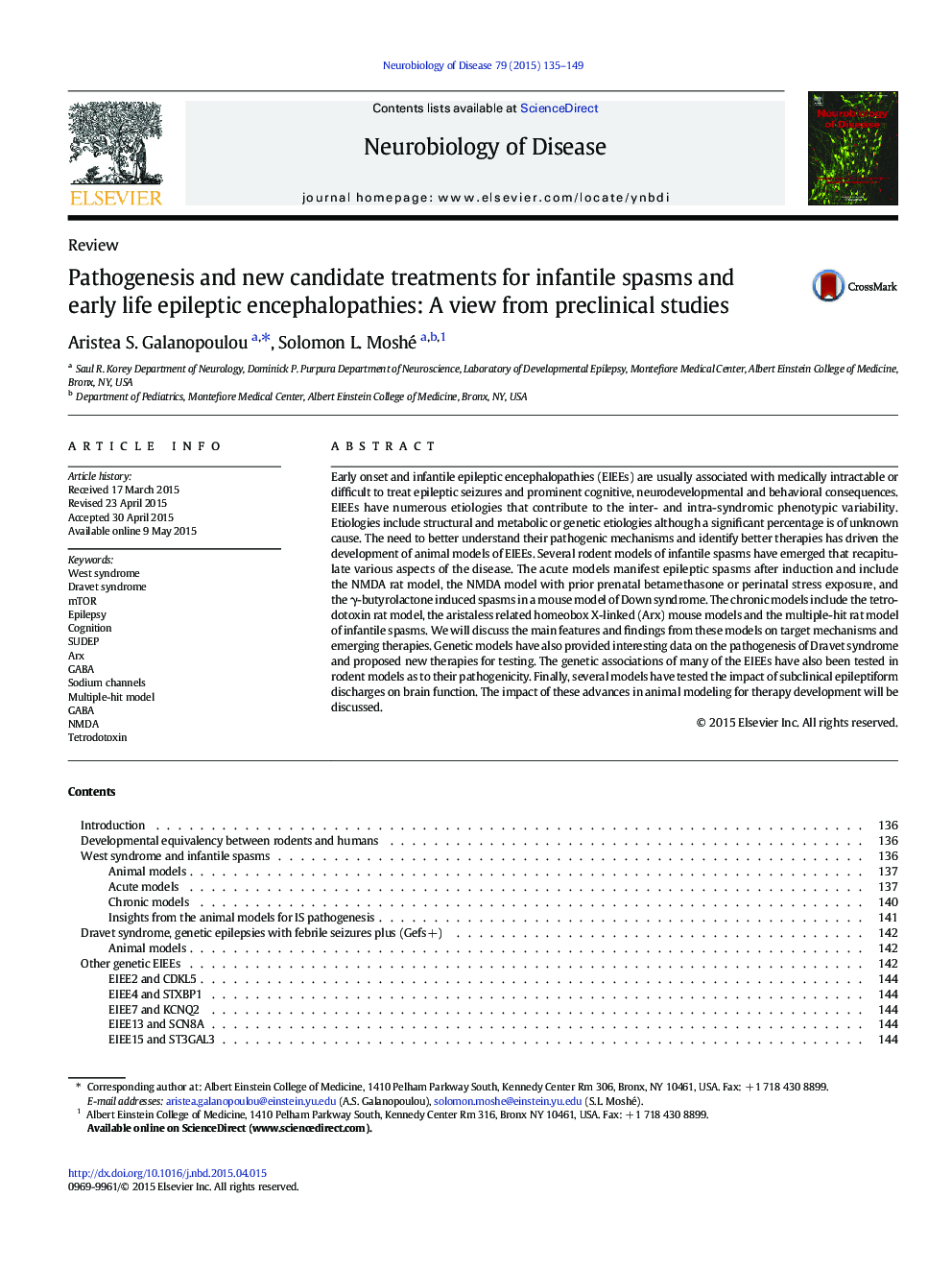| کد مقاله | کد نشریه | سال انتشار | مقاله انگلیسی | نسخه تمام متن |
|---|---|---|---|---|
| 3069291 | 1580644 | 2015 | 15 صفحه PDF | دانلود رایگان |
• Acute IS models tested the role of NMDA, perinatal stress, and GABAB receptors.
• Chronic IS models tested the role of mTOR, ARX, lesions, and interneuronopathies.
• Preclinical therapy development is ongoing in models of IS and Dravet syndrome.
• Genetic mouse models of early onset epileptic encephalopathies exist.
• The role of epileptiform discharges on brain function has been tested in animals.
Early onset and infantile epileptic encephalopathies (EIEEs) are usually associated with medically intractable or difficult to treat epileptic seizures and prominent cognitive, neurodevelopmental and behavioral consequences. EIEEs have numerous etiologies that contribute to the inter- and intra-syndromic phenotypic variability. Etiologies include structural and metabolic or genetic etiologies although a significant percentage is of unknown cause. The need to better understand their pathogenic mechanisms and identify better therapies has driven the development of animal models of EIEEs. Several rodent models of infantile spasms have emerged that recapitulate various aspects of the disease. The acute models manifest epileptic spasms after induction and include the NMDA rat model, the NMDA model with prior prenatal betamethasone or perinatal stress exposure, and the γ-butyrolactone induced spasms in a mouse model of Down syndrome. The chronic models include the tetrodotoxin rat model, the aristaless related homeobox X-linked (Arx) mouse models and the multiple-hit rat model of infantile spasms. We will discuss the main features and findings from these models on target mechanisms and emerging therapies. Genetic models have also provided interesting data on the pathogenesis of Dravet syndrome and proposed new therapies for testing. The genetic associations of many of the EIEEs have also been tested in rodent models as to their pathogenicity. Finally, several models have tested the impact of subclinical epileptiform discharges on brain function. The impact of these advances in animal modeling for therapy development will be discussed.
Journal: Neurobiology of Disease - Volume 79, July 2015, Pages 135–149
